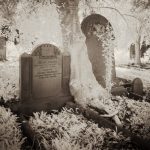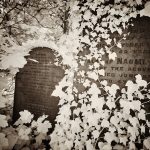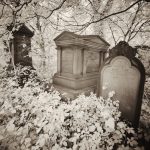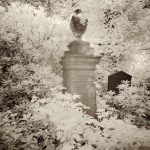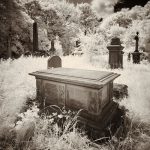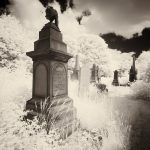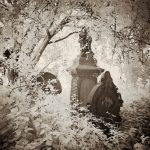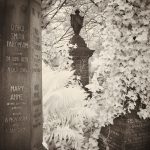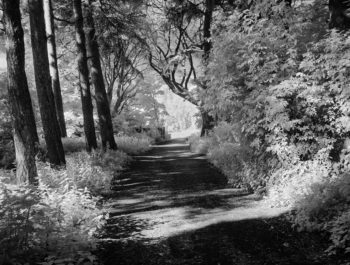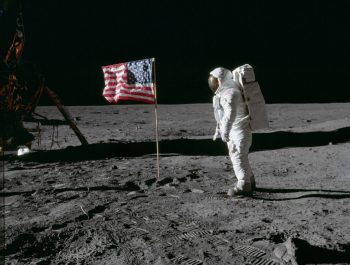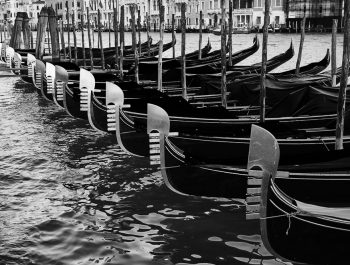The Value Of Working On Projects

I find that a lot of attendees on my workshops are constantly in search of the photographic equivalent of a musical Top Ten hit in the hope that over time they’ll produce a portfolio of images of iconic subjects taken in absolutely stunning light. And who can blame them for wanting to pursue those one-off photographs where the viewer’s reaction is ‘wow – what an amazing image!’. There is no denying, it is good to have those high impact photographs in our collection. And in the 21st century, the internet encourages the ‘instant hit’ approach to photography as social media and photo sharing sites like Flickr, Facebook & Instagram reward images with recognition from our ‘friends’ and followers. But the number of photographs posted on the internet each day requires them to be judged quickly and either ‘liked’ or passed over as a result of a cursory glance. This is hardly a reliable barometer of the true value of any image and particularly those photographs that require study, consideration, and reflection.
If all we aim for is to maximize our ‘likes’ and to produce a compilation of hit singles, then we are limiting our photographic endeavors and denying the full potential of photography as a means of communication. Why? Firstly, the result is likely to be a collection of possibly excellent but almost certainly unconnected, disparate images. Secondly, the search only for ‘greatest hits’ can lead to frustration & disappointment because by definition they are not that commonplace. It was Ansel Adams who said ”twelve significant photographs in any one year is a good crop”. And thirdly, photography is more than simply the pursuit of a Top Ten hit. For example, it’s an incredible medium for storytelling where the whole is greater than the sum of the parts. To continue the musical analogy, instead of a 3-minute pop song think of a concept album or classical symphony.

Trying to communicate our vision through single images is extremely limiting. In contrast, by conveying a message via a series of photographs is incredibly liberating – by using multiple images more possibilities for our photography become available, enabling us to communicate in more nuanced and effective ways.
This is why I am a great advocate of the photographic project – the in-depth exploration of a theme, idea, concept or subject to produce a body of work that has integrity, coherence and potentially a longer-term impact than a single, one-off photograph. A project encourages us to be specific, to home in on (even to focus on!) one theme, idea, concept or subject. This helps to concentrate our visual energies rather than randomly scattering and diluting them through the process of randomly photographing everything we see that might be of interest.

Furthermore, working on a project helps us to develop our own style and vision. For a sustainable project should ideally be based on our interests, our passions – the things that excite us – and as a result we are more likely to shoot from the heart, producing images with more emotive power.
A project can encourage us to look beyond the obvious images to explore our subject more fully and to think laterally & creatively about how we can photograph it in different and unique ways. I can say from personal experience that this process also aids our development as photographic artists. By exploring our personal ideas about a subject or theme in depth we are more likely to produce photographs that reflect our unique view of the world. The first shots we take maybe replicas of others we have seen but to pursue a project fully to completion will usually require us to explore beyond that – like peeling off the layers of an onion to reach the core of our chosen subject. The discipline required in doing this will ultimately lead to the production of distinctive images, heavily shaped by our personal vision.

A technique that helps with this process (and one I regularly suggest to my workshop participants) is to come up with 1, 2 or 3 words that sum up their response to a subject (it could be a location for example) and then to consider the various ways they can represent those words visually via a photograph. This can form the basis of a project. It’s an approach that I use when I’m visiting a much-photographed location for it helps me to produce my personal response to it rather than fall into the trap of repeating the iconic but all too familiar images. Sometimes this leads to long term projects that I revisit over a period of years; other times they last only for the duration of a single trip.
For example, on my first visit to Copenhagen, I was struck by how colourful a city it is. I decided that would be my project for the few days I was there. I just concentrated on producing colourful, abstract images that captured my response to that place at that point in time. I was only there for a long weekend but produced a set of 12 photographs that I was very satisfied with and as a series they will always represent Copenhagen to me.

In contrast, I have been working on a long-term project for a few years now photographing just sea and sky. It originated from thoughts I was having about minimalist photography and I challenged myself to see how much I could remove from an image and for it still to work. The images in this project only have the two elements – no beaches, no foreground rocks, no ships, etc – and the only common factor in the photographs in the series is the horizon line – hence the title ‘180°’.
So, you can see, the projects that we choose don’t have to be focussed on deep, meaningful, life-changing topics. Even relatively simple subjects can form the basis of a project. The important thing is that they interest us enough to give up our time to and that they encourage us to constantly practice our art & our techniques. Through practice & experimentation, we can refine our skills and develop our photographic voice.

A project can also provide us with much needed motivation. We all find ourselves in an artistic rut from time to time – it’s an inevitable part of the creative process. Working on a project can provide the impetus to keep photographing, to develop fresh approaches and re-energise & rejuvenate our photography.
In my experience, working on projects offers a more contemplative and thoughtful approach to photography when compared to the frenetic hunt for a ‘greatest hit’. This is not only a vital first step towards attaining a higher level of visual expression it is also more likely to produce images that resonate over a longer period of time.

MY PROJECT – ‘THE FORGOTTEN’
The origins for this project lay in my particular (and some might say, jaundiced) view of cemeteries. Drawing from my own family’s experience I’ve witnessed the immediate descendants of the deceased visit their grave on birthdays, at Christmas, Mother’s or Father’s Day, etc to pay their respects, clean up the gravestone and lay flowers. A tradition perhaps maintained by one or possibly two generations. After that the graves lay untended and unvisited; the entombed not remembered by subsequent generations who probably couldn’t locate the graves even if they wanted to. Headstones fall into disrepair and graves become overgrown; nature starts to reclaim the ground and those interred there become ‘The Forgotten’.
It was the manifestation of this phenomenon that I set out to record with my camera at a cemetery in West Yorkshire. Many influential and wealthy businessman (primarily from the thriving 19th-century woolen trade in the area) were buried there. Sadly, those once grand graves and tombstones, that bore witness to their wealth and social standing, are now showing the signs of abandonment and neglect.

I made several visits over one summer. Ironically, having set out with what could be described as a negative remit, I soon began to see and appreciate the beauty in the decay. Nature has taken over large areas of what was once a manmade, manufactured space. Plants and trees have intertwined themselves in-between and around the tombs creating a habitat for a variety of flora and fauna. The natural and the manmade worlds beautifully cohabiting in the same space but Mother Nature leaving no doubt as to who will prevail if left unmanaged.
As I moved through the cemetery and started to read the inscriptions on the gravestones I also became interested in the social history; the graves became a window transporting me back to the 1800s. Some of the deceased had their trade proudly described on their gravestones (mainly men I noted; a further indication of the period). Many of those occupations were obvious and familiar to this photographer born in the 20th century – blacksmith, saddle maker, picture frame manufacturer, ironmonger, and composer. Others were previously unknown to me and I found them intriguing enough to do more research; so, for example, I discovered that a ‘Wool Stapler’ and a ‘Butter Factor’ were people who traded in wool and butter respectively. The names on the graves were also from another era – popular at the time but almost unheard of now (for example Caleb, Fanny, Eugenia, Rosetta).

I also became fascinated by the stories that could be read into the lives of the people buried there – parents and their children dying at an age we would consider premature. I assumed this to be a result of the economic & industrial environments they lived in as well as the absence of comprehensive medical care at the time (no National Health Service in the 19th century of course). There were many sad stories to be gleaned from reading the gravestones.
There were many other graves that hinted at the lives of the people buried there. I found it all fascinating. For a short while at least I remembered those who appeared to have been forgotten.
Technical Information

All the images for this project were taken with an Olympus OMD EM5 converted to record infrared light. I mainly used the Olympus 9-18mm lens (the focal range being ideal for this work) and occasionally the Olympus 12-100mm Pro lens.
I felt that infrared suited this project. The resultant recording of tones separated the foliage from the graves (with straight black & white photography they would have recorded as very similar shades of grey). I also thought that the ethereal look of the images suited the ‘otherworldly’ nature of the subject matter.
Images from the project are available in book form (price £10 plus postage & packing) available directly from Steve Gosling –
Top TipsBe specific – identify the focus of your project and be as specific as you can. An ill-defined project results in poorly directed or wasted effort and a loose collection of vaguely (at best) or totally unrelated images. Be disciplined – working on a project requires commitment and discipline. It’s easy to get distracted and to go off at a tangent to the main goal of a project. Also set aside physical time and mental space to dedicate to a project and protect them vigorously. Don’t aim for perfection – remember that the pursuit of perfection is only valuable if it doesn’t stop you from doing something. Taking a less than perfect photograph is better than taking none at all. Sometimes ‘inferior’ images can be the source of valuable learning. Go public – commit yourself to your chosen project. Announce your intentions to your family & friends or via the internet using your website, Facebook, Twitter, etc. The externalization of your intentions can help you stick at it when energy levels fall or when work & family pressures have a detrimental effect on the pursuit of your project. And the feedback you receive from others might provide the incentive & encouragement to help drive your project forward. Challenge yourself (but not too much!) – strive for a balance between setting yourself a project that is challenging but not so difficult that you become demoralized and disenchanted. If you pick a project that is too easy you will run the risk of getting bored with it, but overextend yourself and it won’t get finished. Be consistent – for each project you undertake think about the approach (e.g. B&W or color, minimalist or complex compositions) that will most appropriately convey your intentions and stick to that. This consistency could become the foundation stone of your style. Think about outcomes at the beginning – consider what is your ideal end product (e.g. framed & mounted prints, a book, a portfolio of prints, an illustrated presentation); and how many images are required; and who is your audience. Learn from your projects – a project shouldn’t end with the taking of the last photograph. It’s important to evaluate what worked, what didn’t and most importantly why. Then try to extrapolate the lessons learned to the rest of your photographic endeavors. |
Some Additional Images
Steve Gosling
July 2019
Harrogate, North Yorkshire
I am a UK based professional photographer who loves black & white photography. My photographs have been widely published & exhibited internationally and has won many awards – most recently achieving an ‘Honor of Distinction’ in the prestigious international ‘B&W Spider Awards’ in 2018. I enjoy writing & teaching about photography and have run a successful workshop programme for nearly 20 years, encouraging and inspiring photographers from across the world. I am an Ambassador for Olympus, Gitzo & Permajet inkjet papers as well as working closely with Phase One and Lee Filters.

